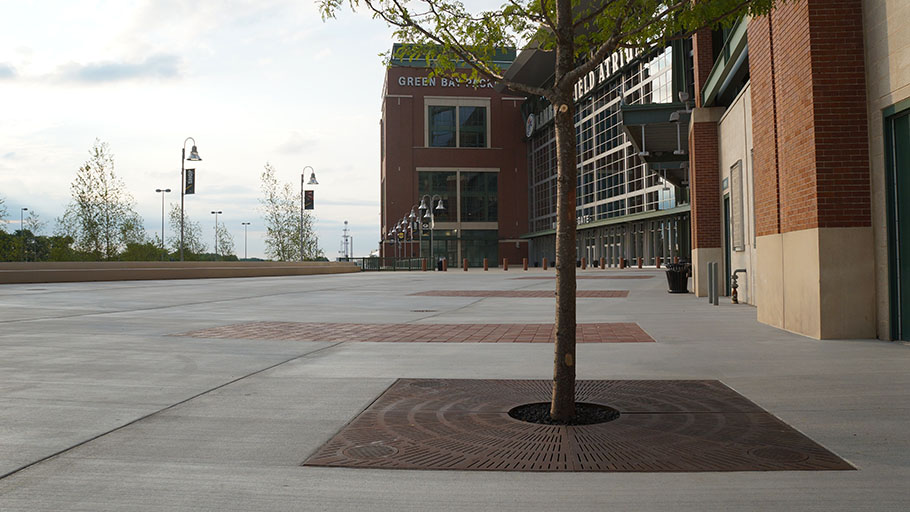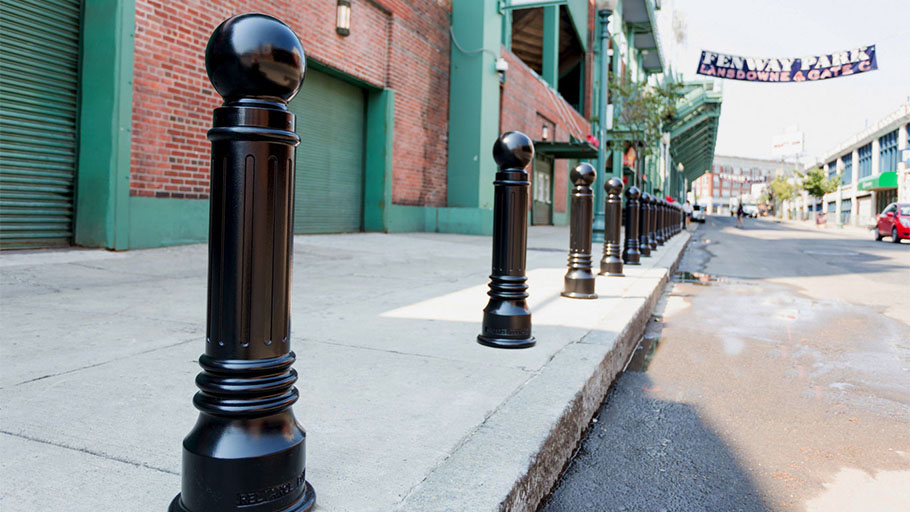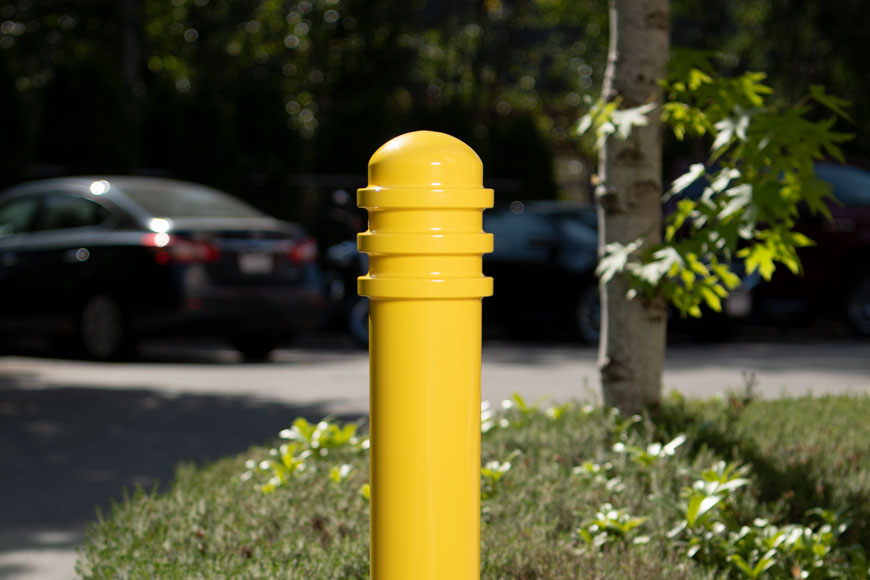Planning safe and accessible lots, from bike storage lockers to ride-share stalls
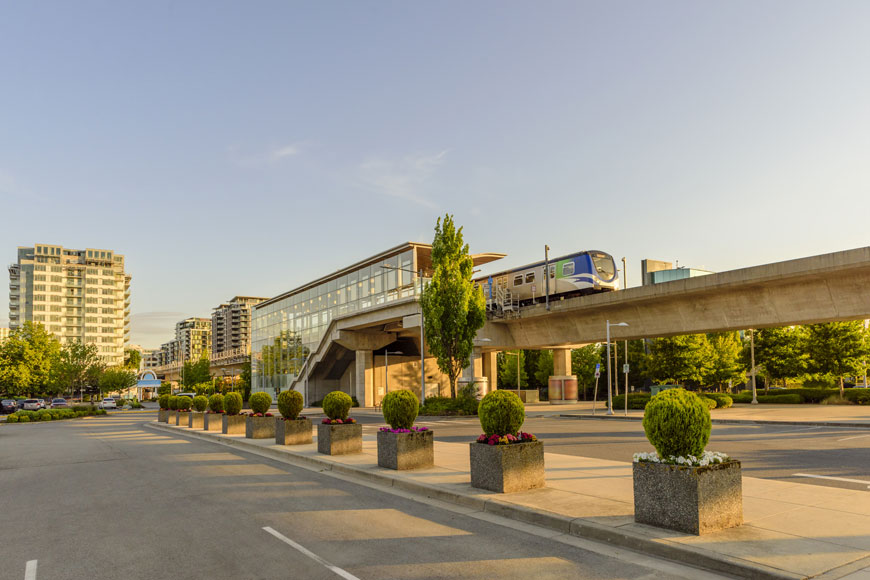
What is a Park and Ride?
Many Park and Rides are parking lots where people leave their cars in order to take transit. As a design challenge, they’re seen in the same vein as other parking lots. However, park and ride serves a different function than most parking lots. These spaces are intermodal transfer points: they move people from lower- to higher-occupancy vehicles and back again. In addition to connecting drivers with transit, trains, ferries, and planes, these locations serve carpoolers, ride-share or taxi companies, and cyclists. Park and Ride design is therefore slightly different than the design of a destination lot.
As spaces that serve commuters, park and rides can be most welcoming when they provide amenities. For example, washrooms, waste receptacles, and vending machines for food or transit tickets are often needed at transfer points: larger park and rides can also offer wifi, cafes, or newspaper stands.
A Park and Ride lot must manage many modes of transportation. At big transfer points like train stations and ferry terminals, there may be a bus loop, a dedicated taxi stand, car-sharing vehicles, and passenger drop-off zones. Carpoolers may be given dedicated stalls if they arrive with more than one person in the vehicle. Ride-share companies like Uber or Lyft are traditionally seen as competitors to taxis, since they can be hub-to-doorstep solutions. Yet with “pool” options, ride-share becomes an on-the-fly carpool solution that needs different infrastructure than a taxi stand. Bicycles are also a welcome mode at Park and Ride, with cyclists looking for outdoor bike storage lockers to provide a secure space for longer term parking.
All these modes of transport must share space safely and allow people to move comfortably from one mode of transport to another. Site planners must consider the needs of all user groups to optimize Park and Ride design.
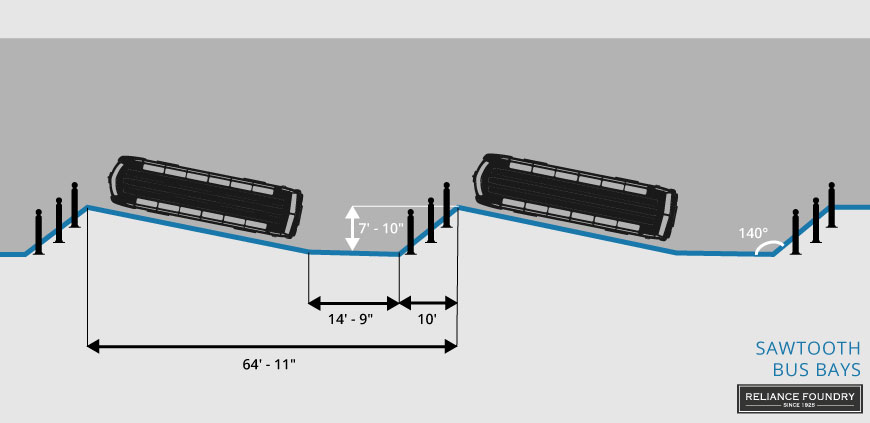
Bus loop design
Park and Rides are often the site of a transit loop, even if the main station is designed to provide access to a high-speed train, rail line, ferry, or airport. There are several important considerations when designing a bus loop.
- How quickly will the buses be traveling?
The shape of the roads and infrastructure around the Park and Ride will determine how quickly and efficiently a bus can move. A bus’s turning radius becomes larger the faster it is moving. At 15MPH, the radius from the point around which the bus is turning should be 60ft—even more for an articulated bus. Compare this to a bus moving at 5MPH, which can turn around a center point at only 35ft. Therefore, slower speeds can help in tight spaces.
Slower speeds also help with crash protection. Crash-rated bollards can be used near pedestrian zones and at the end of bus parking bays to help protect against accident or driver error. Buses are large, heavy vehicles. Standard K-12/M50 rated crash bollards are rated to stop vehicles of 15,000 pounds moving at 50 miles per hour. They are able to stop 20,000-33,000 pound buses, but only if those vehicles are moving more slowly than 50 mph. - What facilities are needed?
Benches, trash cans, recycling bins, and bus shelters are important for the comfort of passengers and the upkeep of the area. If there is no security on-site, an emergency call box is an important precaution. Streetlamps and pathway lighting bollards also provide safety through visibility. (Using low profile lights where possible, like solar lighting bollards, helps manage the light pollution that challenges plants, insects, birds, and other animals.)
Park and Ride areas sometimes provide washrooms for the public. If the bus loop constitutes an end-of-line or timing stop, separate facilities should be provided for drivers so that line-ups do not cause schedule delays.
Adding trees (with protective tree grates), planters, and green-spaces to open-air bays provides shade and bird habitat, and makes the area more attractive. - Should there be saw-tooth or linear bus-bays?
Bus bays allow buses to pull out of traffic for loading and unloading, and give a place for the bus to wait during timing stops. Saw-tooth bays, that allow a bus to pull in at a bit of an angle against traffic, maximize more curb space than linear bays, although the bays themselves need to be a bit wider. They’re recommended for places that accommodate multiple bus routes. - How can the bus loop be made accessible?
To make sure all passengers are safe and secure, good universal design principles should be offered. Full requirements and best practices are available at ADA.gov. Universal design practices include:- wayfinding and route finding information in simple language and contrasting colors
- information in line of sight for a seated or standing user
- ground surfaces clear, not-slippery, and appropriately graded for wheelchair use
- detectable warning plates before change in grade or before curbs
- pedestrian crossings marked and lit, with audible prompts where appropriate
- bollards, waste baskets, and other elements at least four feet apart so that wheelchairs can move through them
- places for wheelchairs to turn fully around
A bus loop should be as close to the main terminal as possible. Its location should minimize conflict with other adjacent-to-terminal modes, such as pedestrian drop-off zones and taxi stands.
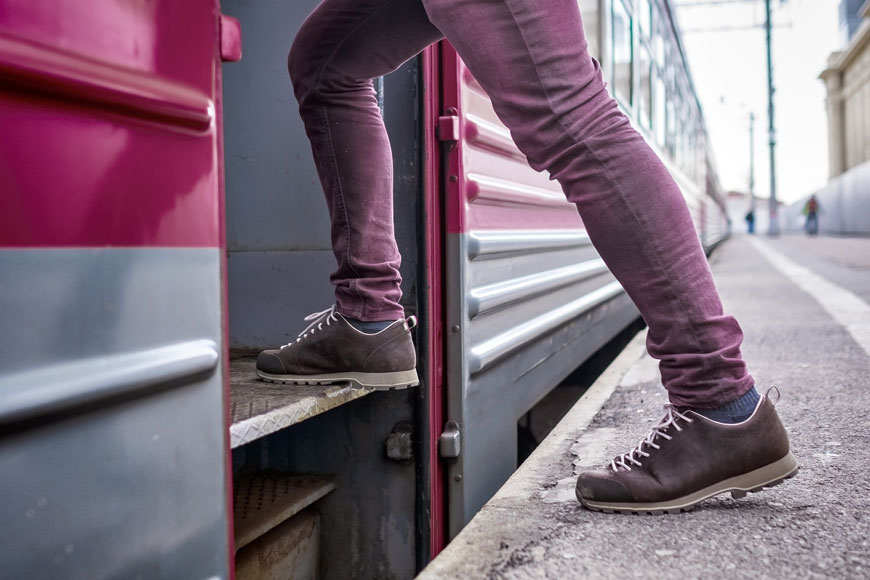
Pedestrian drop-off vs. pedestrian pick-up
Pedestrian drop spaces are usually curbside to the main terminal. They need to be sloped for easy maneuvering for those in wheelchairs and other assistance devices, as well as having detectable warning plates above the change in grade.
In general, there’s a lane for drop off and a lane for through traffic, with drivers moving in and out of each.
Pedestrian pick-up needs are different than drop-off needs. This is especially true at locations that serve large vehicles like ferries and trains. A single arrival time means a flood of disembarking travelers, and curb space is often limited. A Park and Ride design that includes pickup spots at a short walk from the terminal, with a shelter for people to wait for their ride, allows the rush to be distributed over larger space.
Ride-share and taxi queues
Pedestrian pick-up spaces can include paid transportation, including taxi, limo, or ride-share.
Ride-share is having a growing influence on Park and Ride. The driver is usually flagged by app rather than a wave, which allows more intelligent management of the resource. Software can handle last-minute requests for car-pooling and allocate drivers based on destination mapping. To do this, some ride-share cannot be first-come first-served. Finding the correct vehicle therefore matters more than it does in a taxi stand. Lack of standardized fleet vehicles and domed taxi-lights also can make the status of a vehicle unclear.
New solutions are springing up to this ride-share lot conundrum. Spaces dedicated to ride-share may work differently than a traditional taxi stands, using changing light bollards and wayfinding information to allow for the carpool options of these platforms.
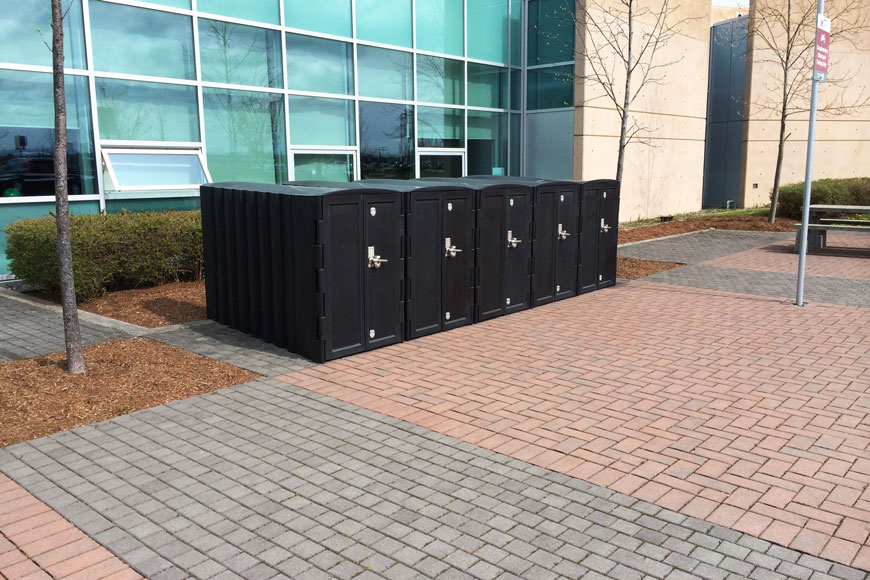
Bike storage lockers and other bike parking
The risk of bike theft increases the longer that a bicycle sits outside. For people who would like to cycle commute to a transit or transport hub, there’s a real fear of leaving a bike at a rack for eight or more hours. In these outdoor spaces, bike storage lockers provide excellent security for parking all day. They can also hold helmets and cycling gear so that the cyclist can travel unburdened to their next stop, giving cyclists some of the storage that drivers have when leaving their cars in the lot.
Marked bike lanes
In an area with so much traffic, bicyclists can be forgotten. Buses, pedestrians, taxis, and drivers are a lot to keep track of, and adding cyclists to the mix can be frustrating and scary for all road users. Whether in surface lots or in parking garages, the addition of marked bike lanes increases safety for all ride share modes. Bicycles are often best accommodated in the larger parking lot—away from buses and passenger drop off and pick up zones. Like drivers, cyclists can securely park their vehicles in outdoor bike storage lockers before walking to the terminal. Conflict between drivers trying to find a spot and cyclists trying to navigate is ameliorated with bike lane separation. Thick, metal-looking flex-posts can be used in places where turns are tight. These rugged flex-posts will not hurt a car that impacts them. They are also large enough that drivers avoid rubbing against them.
Functional parking lot design
When planning a parking lot, the orientation of cars and position of the stalls can influence the security and ease of use of the parking lot. Drivers have different levels of comfort pulling into and backing out of spaces. One-way traffic with angle parking helps manage certain issues of gridlock in busy parking lots at rush times but can be challenged by drivers who miss the direction of traffic flow. Perpendicular parking with two-way traffic lanes, however, can leave pedestrians feeling more like they’re exposed and in traffic. Choice depends on expected traffic flow at peak and low times, shape of the lot, and the typical parking choices in the area.

Charging stations, car-share, and autonomous vehicles
The view of car ownership is changing, and those running Park and Ride lots are beginning to see and adapt to the changing market.
Car share is becoming an industry disrupter, with expected market size of 11 billion dollars by 2024. Each car share vehicle is shown to take three-privately owned vehicles off the road—often the second car for a family. Putting car share vehicles at a Park and Ride allows users to decide at debarkation: do they want to drive home, or take the bus?
Electric cars are also becoming increasingly important to the future of cars. Charging stations for this segment can be a perk, attracting the loyalty of environmentally conscious customers, and/or a money-earner, for the Park and Ride owner.
Driverless cars may some day also be a disruptive influence. Surface currently devoted to parking stalls may need to be repurposed for general passenger pickup from driverless shared vehicles. If this became the norm, some of the technologies used to manage ride-share carpooling and vehicle marking might become important in getting riders to the right driverless vehicle.
The future of Park and Ride
The Park and Ride designs of yesteryear will have to adapt as transit hubs get increasingly busy. New technologies and transportation systems are changing the way people move through cities. In this new environment, “intermodal transfer” is more important than ever.
As cost and environmental concern challenge the single occupancy vehicle, Park and Ride is becoming a regular part of many people’s daily commute. The future of transportation includes many a busy, multi-modal hubs. Once a mundane parking lot, the Park and Ride is becoming a site of integration for transportation innovation.








